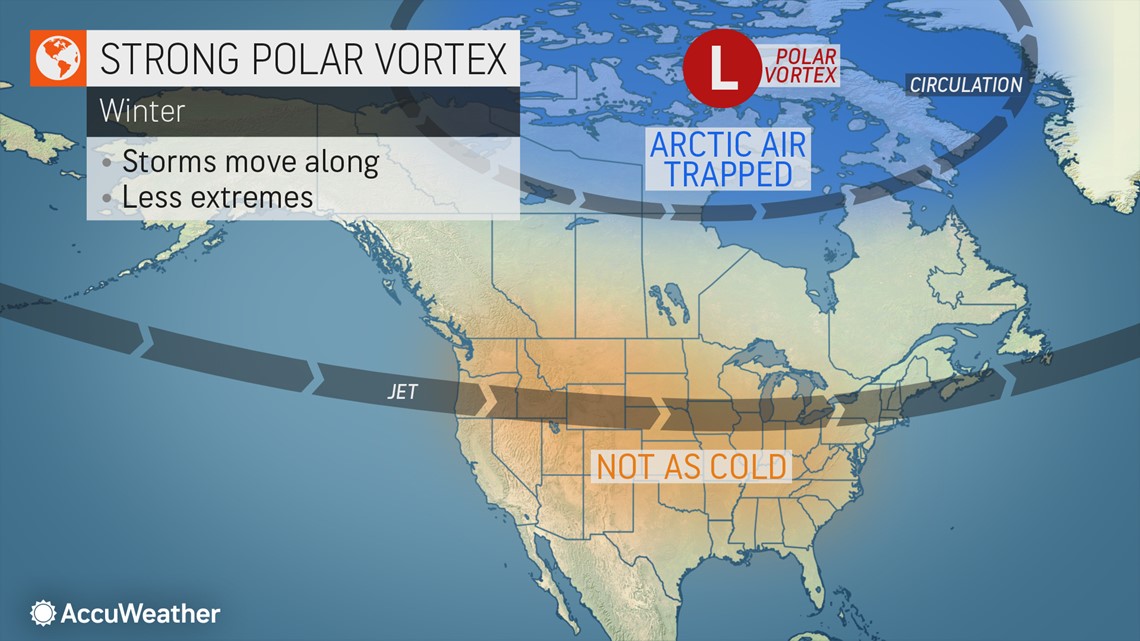
This is not the scientifically correct use of the term polar vortex, but instead is referring to outbreaks of cold Arctic air caused by a weakened polar vortex. Ī deep freeze that gripped much of the United States and Canada in late January 2019 has been blamed on a "polar vortex". When it is very weak, the flow of Arctic air becomes more disorganized, and masses of cold Arctic air can push equatorward, bringing with them a rapid and sharp temperature drop. When the northern tropospheric vortex weakens, it breaks into two or more smaller vortices, the strongest of which are near Baffin Island, Nunavut, and the other over northeast Siberia. When the tropospheric vortex of the Arctic is strong, it has a well defined and nearly circular shape, there is a single vortex with a jet stream that is well constrained near the polar front, and the Arctic air is well contained. Ozone depletion occurs within the polar vortices – particularly over the Southern Hemisphere – reaching a maximum depletion in the spring.Īrctic and Antarctic vortices Northern Hemisphere The tropospheric vortex increased in public visibility in 2021 as a result of extreme frigid temperatures in the central United States, with experts linking its effects to climate change. The tropospheric polar vortex was mentioned frequently in the news and weather media in the cold North American winter of 2013–2014, popularizing the term as an explanation of very cold temperatures. The stratospheric vortex's SSWs were discovered in 1952 with radiosonde observations at altitudes higher than 20 km. The tropospheric polar vortex was first described as early as 1853. Its yearly cycle differs from the stratospheric vortex because the tropospheric vortex exists all year, but is similar to the stratospheric vortex since it is also strongest in winter when the polar regions are coldest.

The equatorward edge is around 40° to 50°, and it extends from the surface up to around 10 km to 15 km. The tropospheric polar vortex is often defined as the area poleward of the tropospheric jet stream.

A sudden stratospheric warming (SSW) is an event that occurs when the stratospheric vortex breaks down during winter, and can have significant impacts on surface weather. The stratospheric polar vortex breaks down in Spring as the polar night ends. The increased temperature difference between the pole and the tropics causes strong winds and the Coriolis effect causes the vortex to spin up. It forms in Autumn when Arctic or Antarctic temperatures cool rapidly as the polar night begins. The stratospheric polar vortex is an area of high-speed, cyclonically rotating winds around 15 km to 50 km high, poleward of 50°, and is strongest in winter.

The stratospheric and tropospheric polar vortices both rotate in the direction of the Earth's spin, but they are distinct phenomena that have different sizes, structures, seasonal cycles, and impacts on weather. The term polar vortex can be used to describe two distinct phenomena the stratospheric polar vortex, and the tropospheric polar vortex. Polar vortices also exist on other rotating, low- obliquity planetary bodies. A more typical weak tropospheric polar vortex on January 5, 2014Ī circumpolar vortex, or simply polar vortex, is a large region of cold, rotating air that encircles both of Earth's polar regions.


 0 kommentar(er)
0 kommentar(er)
